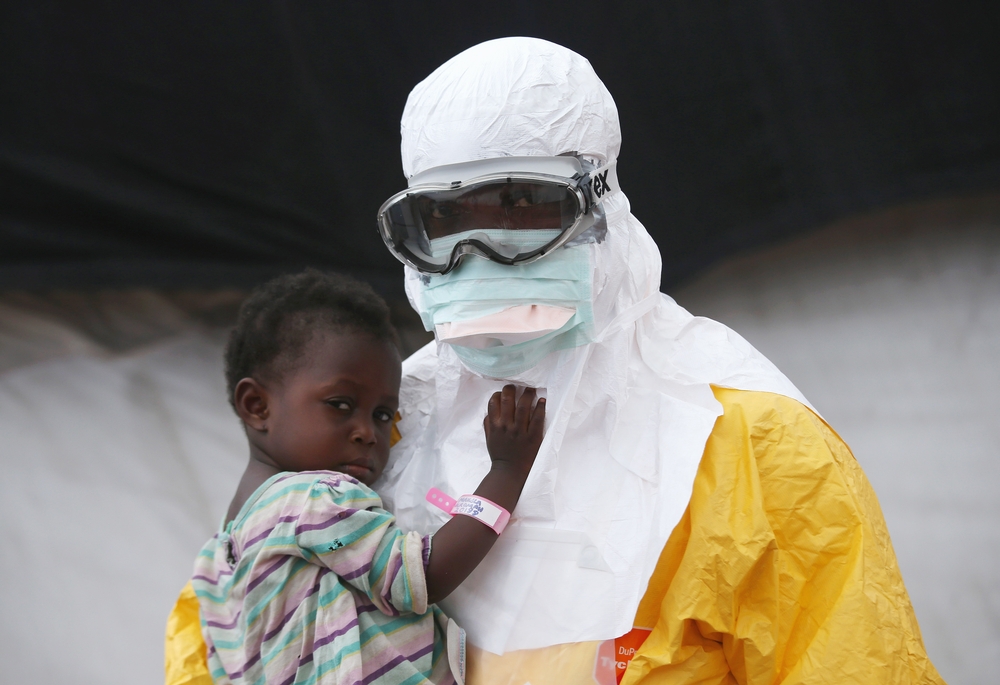
In early September 2014, MSF urged states with biological disaster response capacity to intervene in West Africa, where an outbreak of Ebola has already taken more than 5,900 lives. Without the help of foreign governments, the organisation said, nongovernmental groups and the United Nations had no hope of effectively implementing WHO Global Roadmap against Ebola.
In particular, MSF called for states to urgently intervene in Guinea, Sierra Leone and Liberia to dispatch trained personnel in their numbers, to create mobile laboratories to improve diagnostics and to set up Ebola case management facilities. The organisation also called for these states to establish dedicated air bridges with which to move personnel and equipment to and within West Africa; to create a regional network of field hospitals to treat medical personnel; and to address the collapse of state infrastructure, which has left people in many parts of West Africa without access to basic healthcare.
Three months later, the Ebola response is rolling out in the worst-affected countries, and local people and authorities, international NGOs and foreign governments are now involved to varying degrees. There have been positive steps forward: for example, a number of bodies have been established to improve coordination at the national and regional levels; a handful of field hospitals for healthcare workers have been set up in the region; and governments – with some support from the international community – are now leading on efforts against Ebola in all three countries.
On the whole, however, the response to this rapidly-changing epidemic has so far been inadequate. Instead of the well-coordinated, comprehensive and expertly-staffed intervention MSF called for ninety days ago, actual efforts have been sluggish and patchy, falling dangerously short of expectations. In particular:
- The international response to Ebola in West Africa has been slow, encumbered by serious bottlenecks in terms of staffing. Though all three of the worst-hit countries have received some assistance from foreign governments, these actors have focused primarily on financing and/or building Ebola case management facilities, leaving staffing them up to NGOs and local healthcare staff who do not have the expertise to do so. Training people to safely operate Ebola case management facilities and carry out other necessary activities takes weeks of theoretical and hands-on training. Though a number of organisations including MSF have been offering training, this bottleneck has created major delays.
- In all three of the worst-affected countries, there are still not adequate facilities in which to diagnose and care for patients, and there are major gaps in all other elements of the response[1]. In Liberia, most of the operational beds are concentrated in the capital Monrovia, while remote rural areas are benefitting from little international support. In Sierra Leone, there are still not enough additional case management facilities for the increasing number of infections across the country: most patients currently in MSF’s case management centres (CMCs)[2] in Bo and Kailahun come from other districts. In Guinea, there are only a handful of CMCs open and running, eight months after the epidemic was declared. Across the region, there are major gaps in all other elements of the response. Only a small number of international actors are carrying out these activities and not all of the affected areas are covered.
- We must avoid a “double failure” situation whereby the response is slow in the first instance and ill-adapted later on. Many international actors seem unable to adapt quickly enough to a rapidly-changing situation. The result of this is that resources are being allocated to activities that are no longer appropriate to the situation. In Monrovia, Liberia, for example, more case management facilities are being built despite adequate isolation capacities and a drop in cases in the capital. All actors involved in the response – MSF included – must take a flexible approach and allocate resources according to the most pressing needs at any given time and place.
Today, Guinea, Sierra Leone, Liberia and now Mali are all in different phases of the outbreak and the hotspots are constantly moving. Across West Africa, MSF is providing assistance in all six of the essential elements of an Ebola response: isolation and supportive medical care for cases; safe burials; awareness-raising; alert and surveillance in the community; contact tracing; and the provision of general healthcare. More flexible support is urgently required in all of these areas until the outbreak is over – in other words, until the very last contact has been followed up and is found to be Ebola-free.
[1] MSF’s strategy to control Ebola is organised into six elements: isolation and supportive medical care for cases, including laboratory capacity to confirm infection; safe burial activities in case management facilities and in communities; awareness-raising; alert and surveillance in the community; contact tracing; and access to healthcare for non-Ebola patients, including protection of health facilities and health workers. These activities are interdependent and all must be in place to contain the epidemic.
[2] A case management centre (CMC) is a centralised facility where people can be screened and receive supportive medical care for Ebola in large numbers (50+ beds); by centralising patients a high standard of infection control can be assured. Sometimes referred to as ‘Ebola treatment centres’. Not to be confused with transit centres, which are facilities where suspected cases can be safely isolated and receive care until transfer to a CMC; or community care centres (CCCs), which are small (eight to ten bed) facilities where suspected patients from a smaller catchment area are isolated within their communities and are administered basic care, medications, safe water and sanitation, and food supplies.